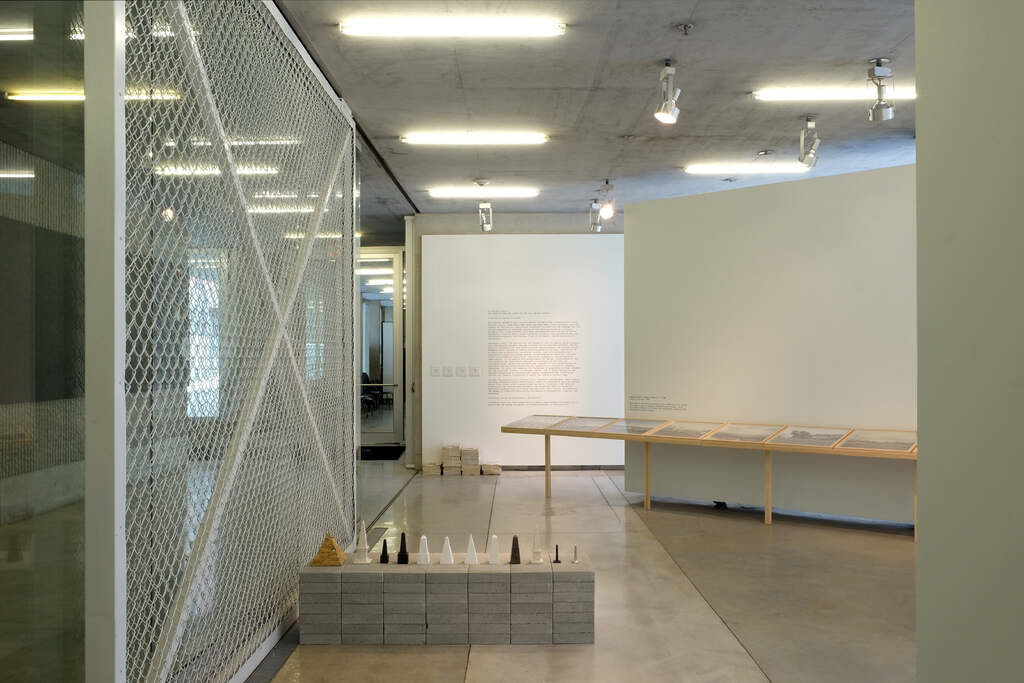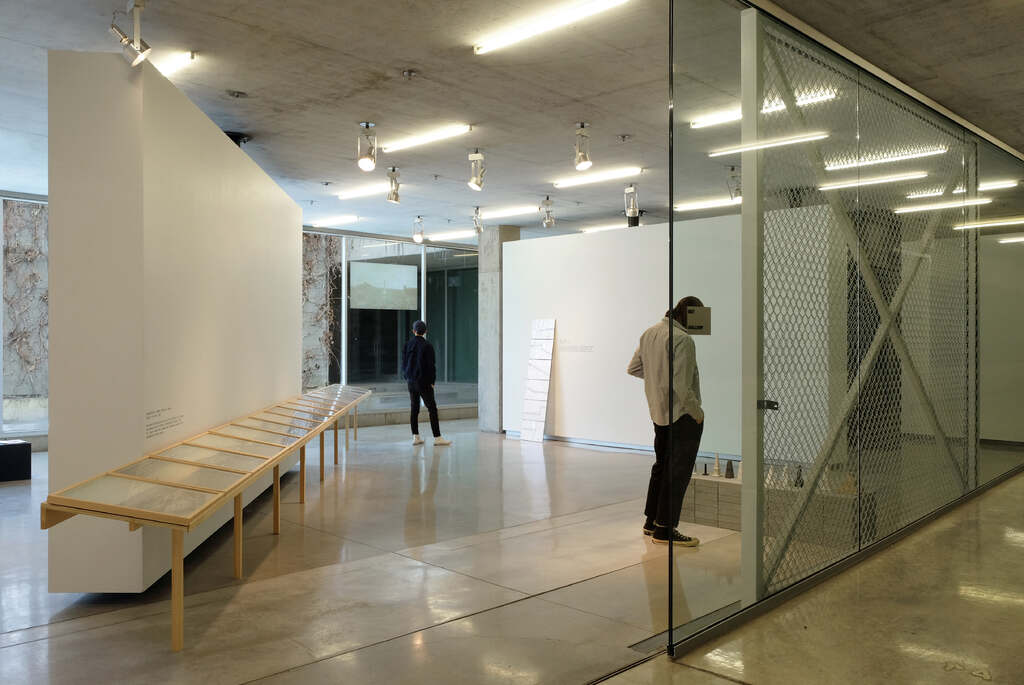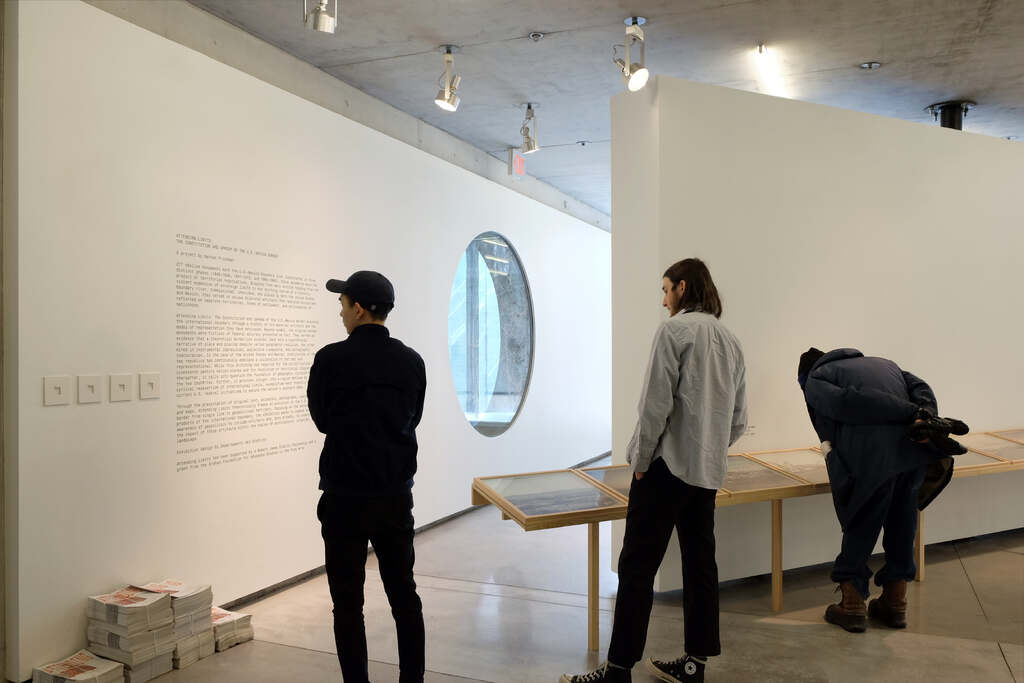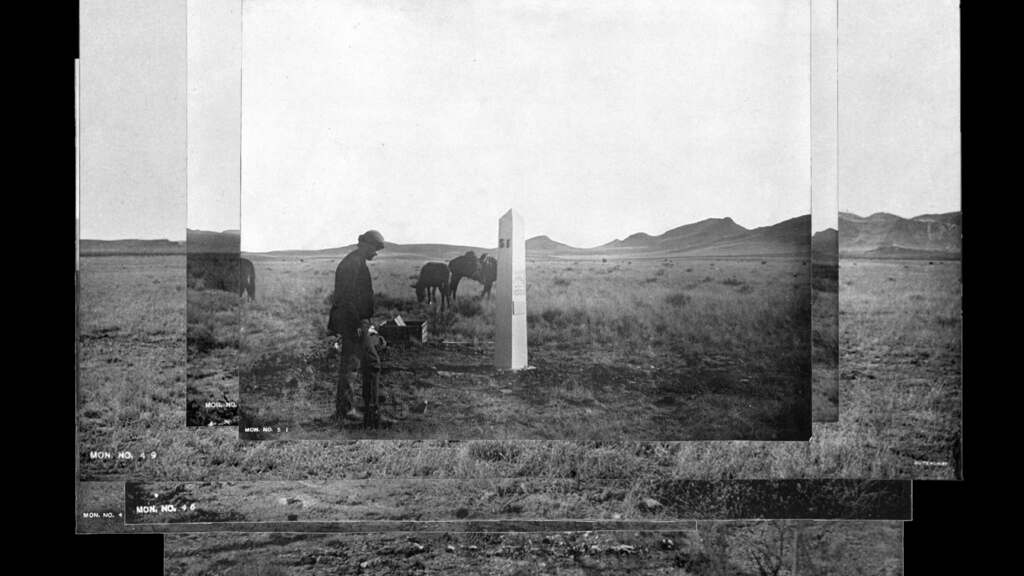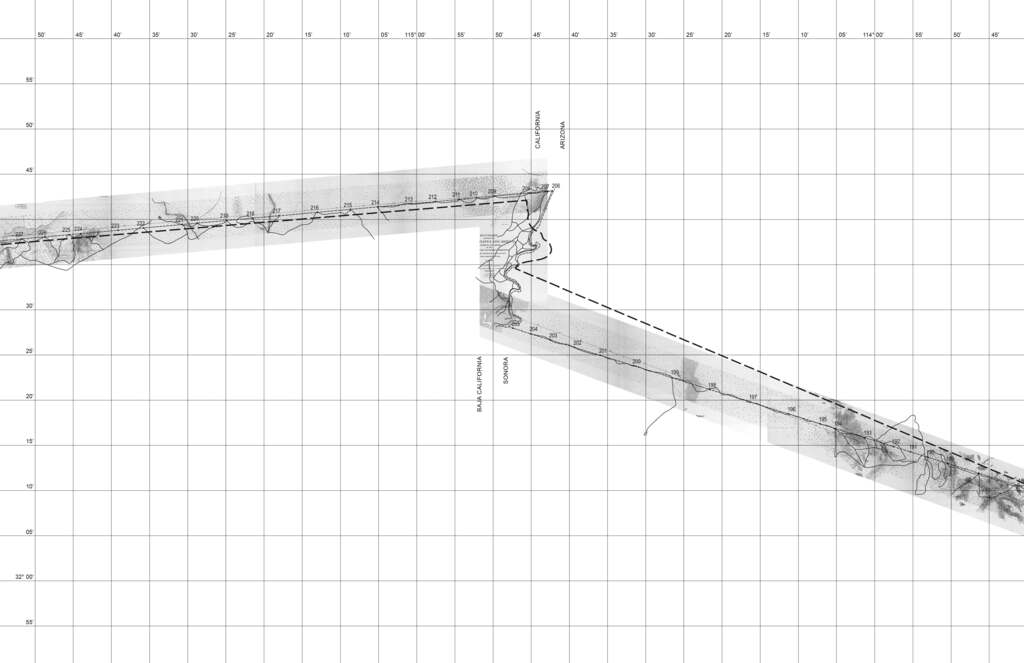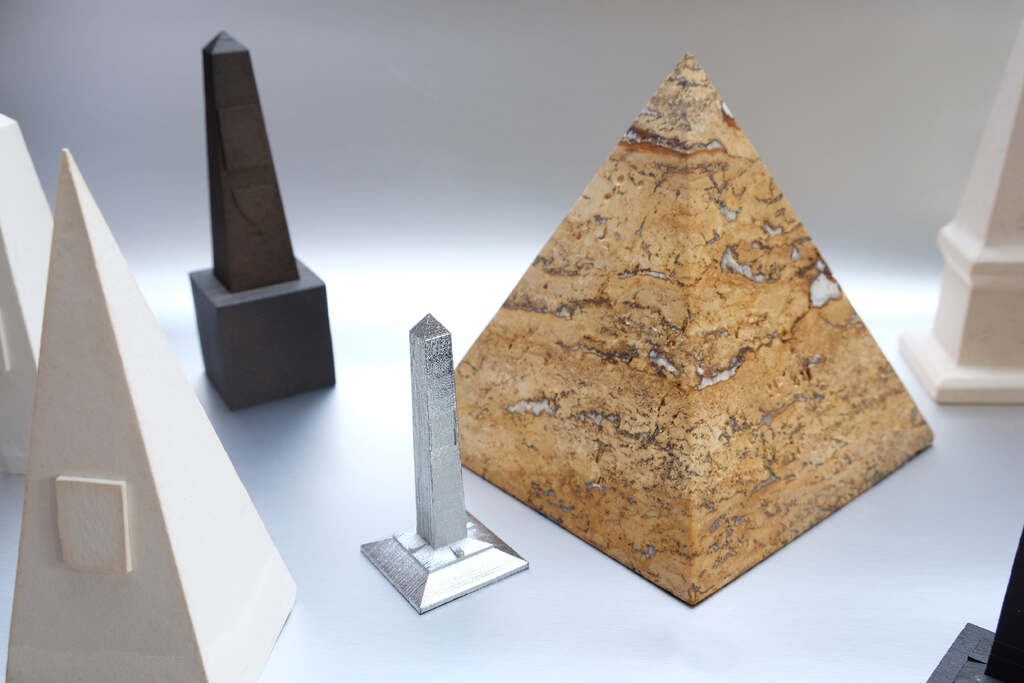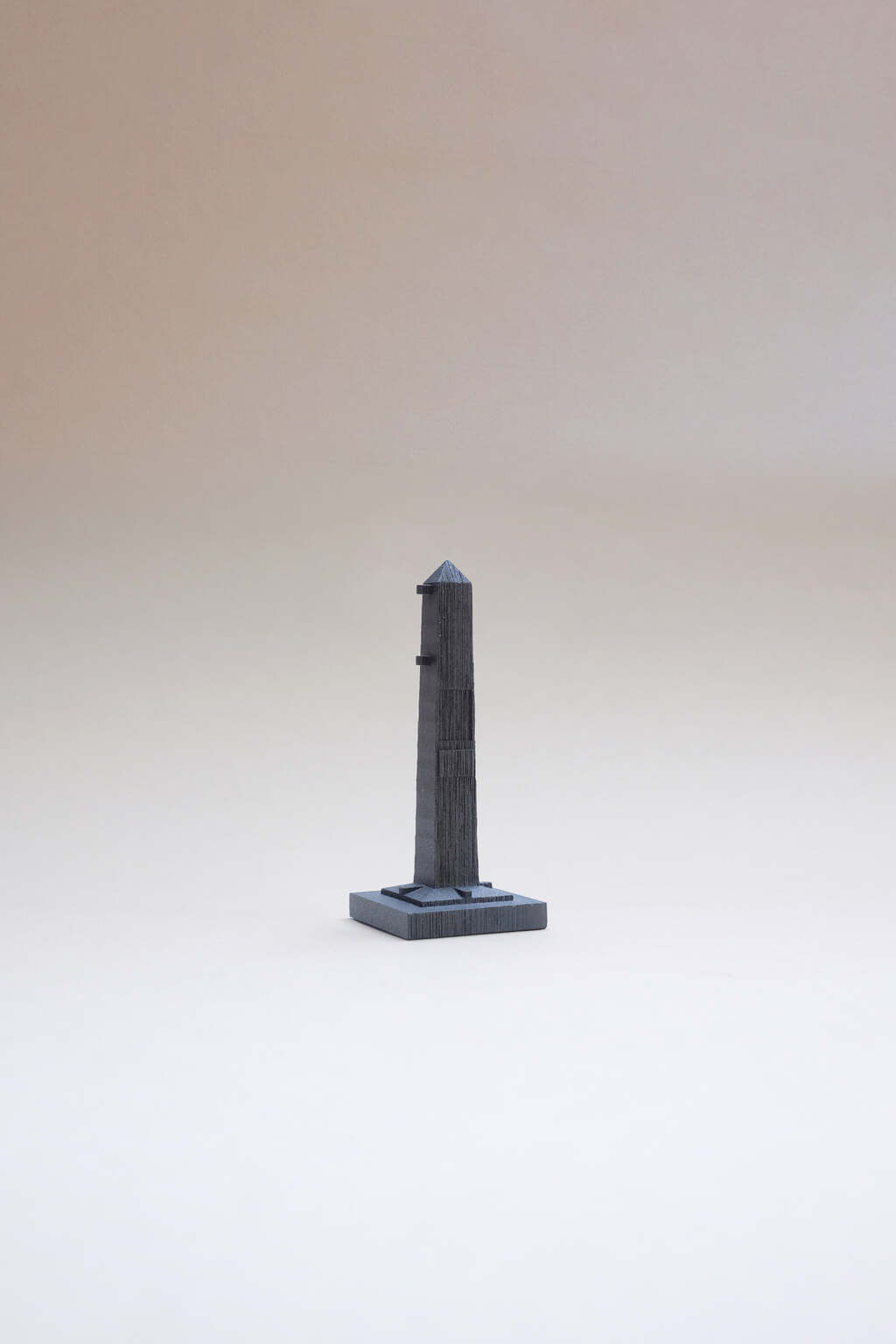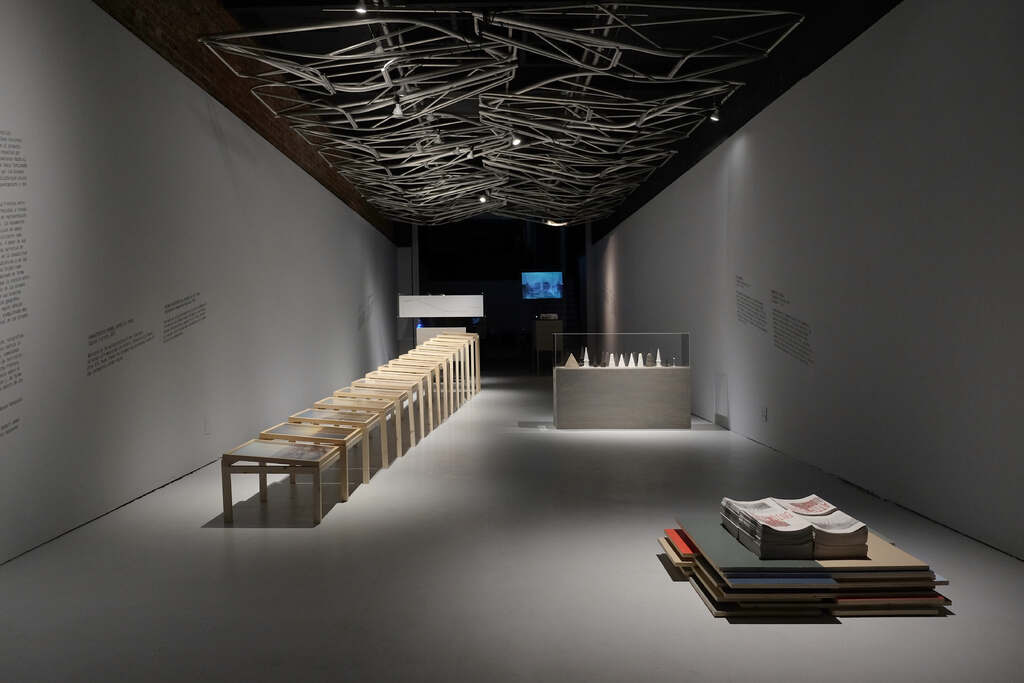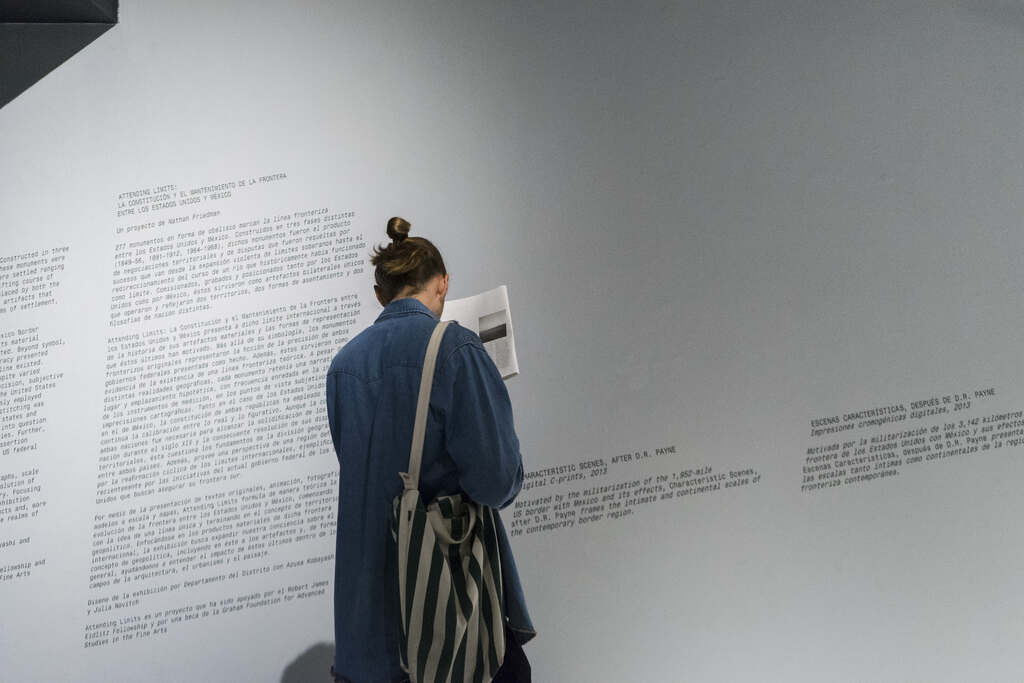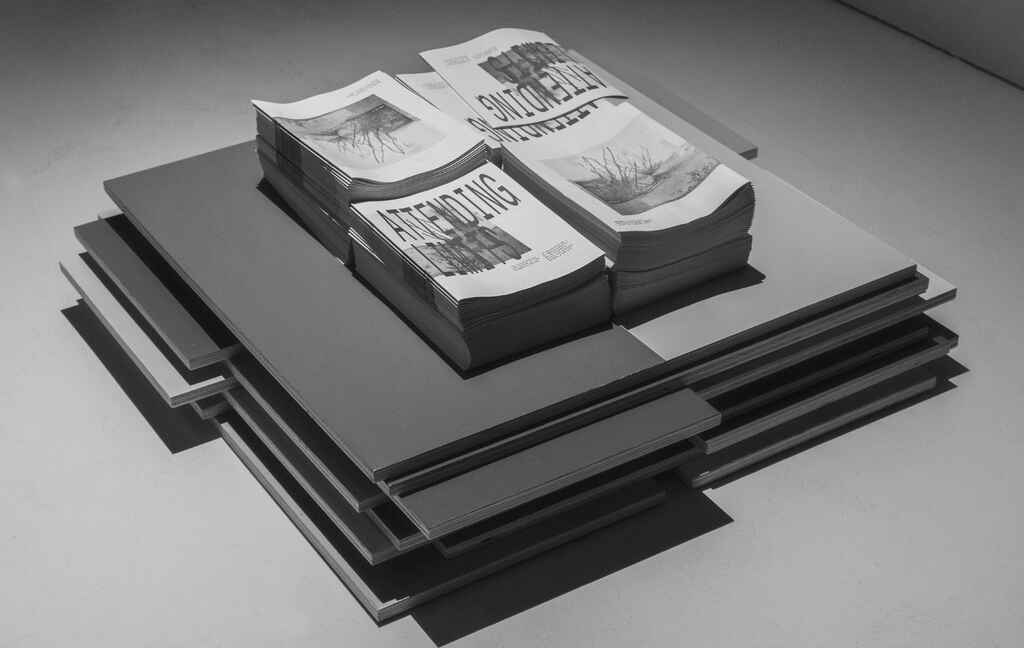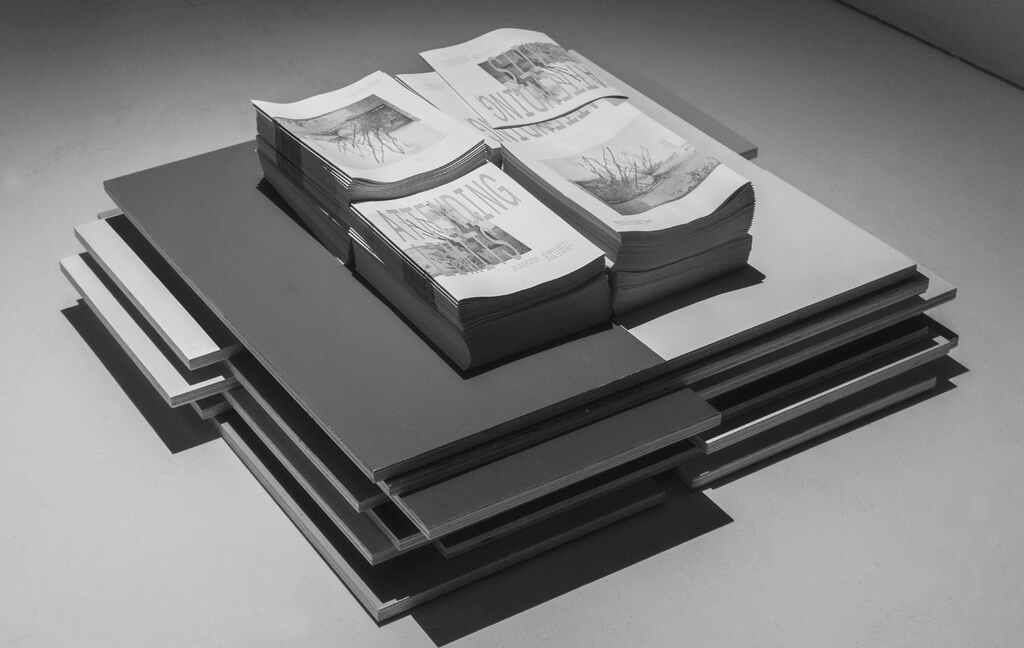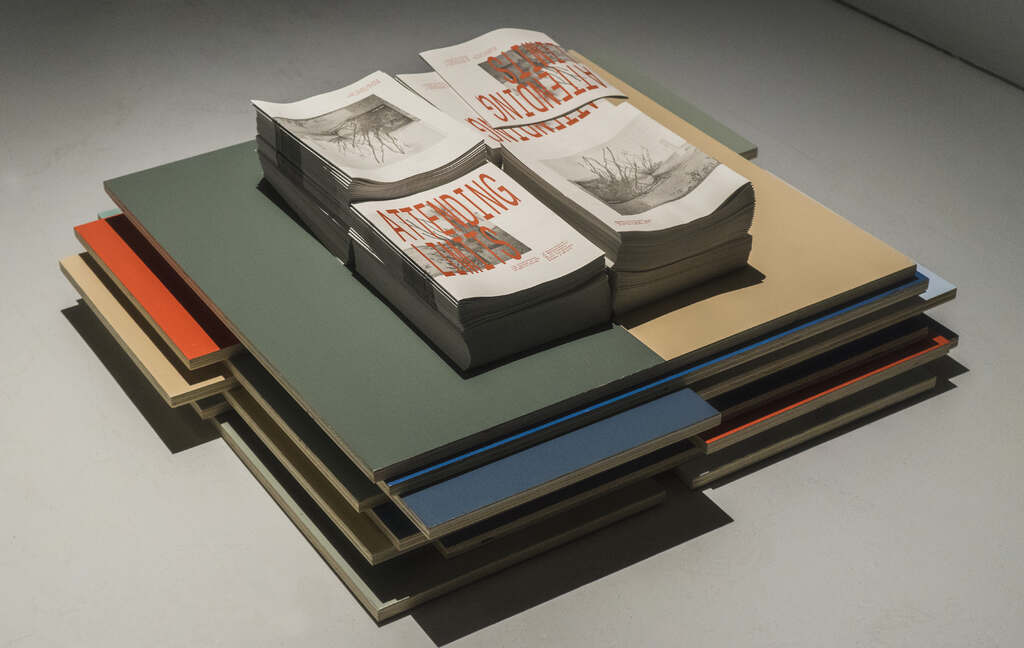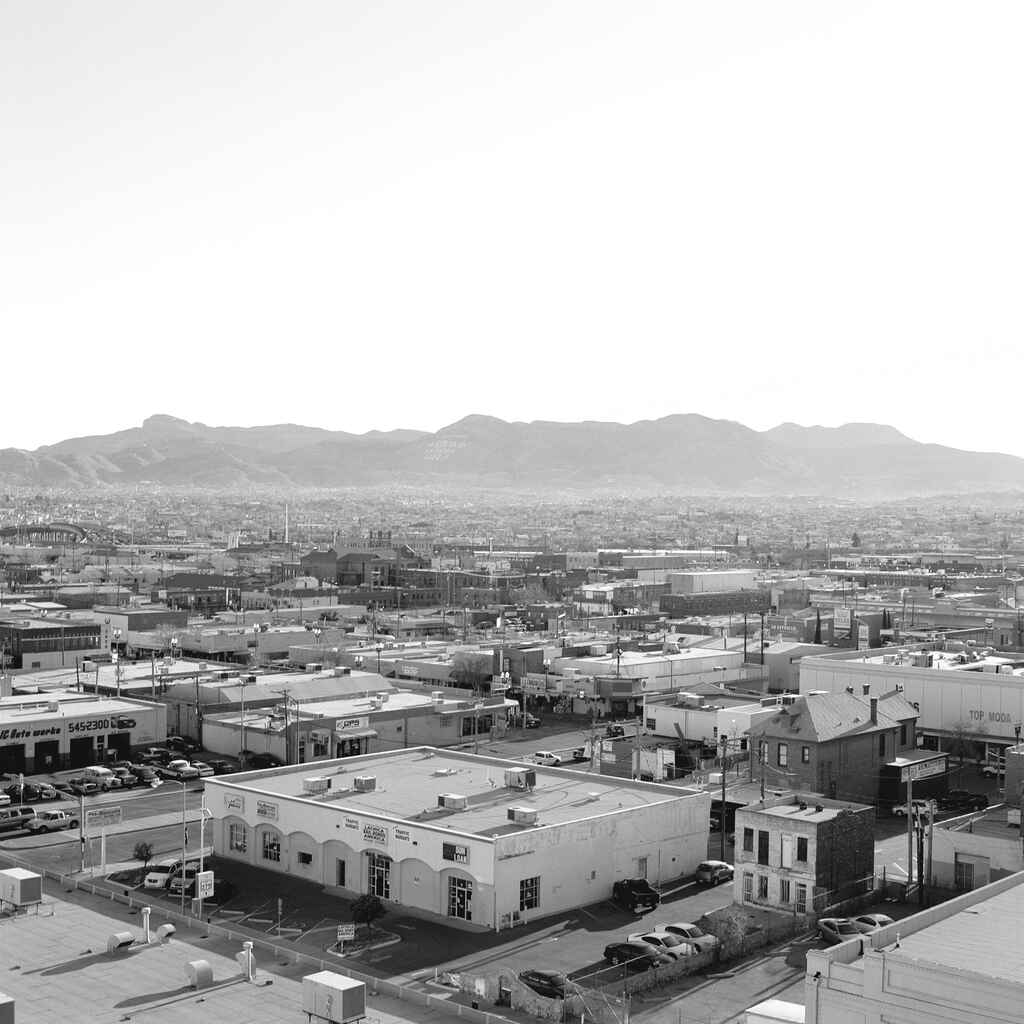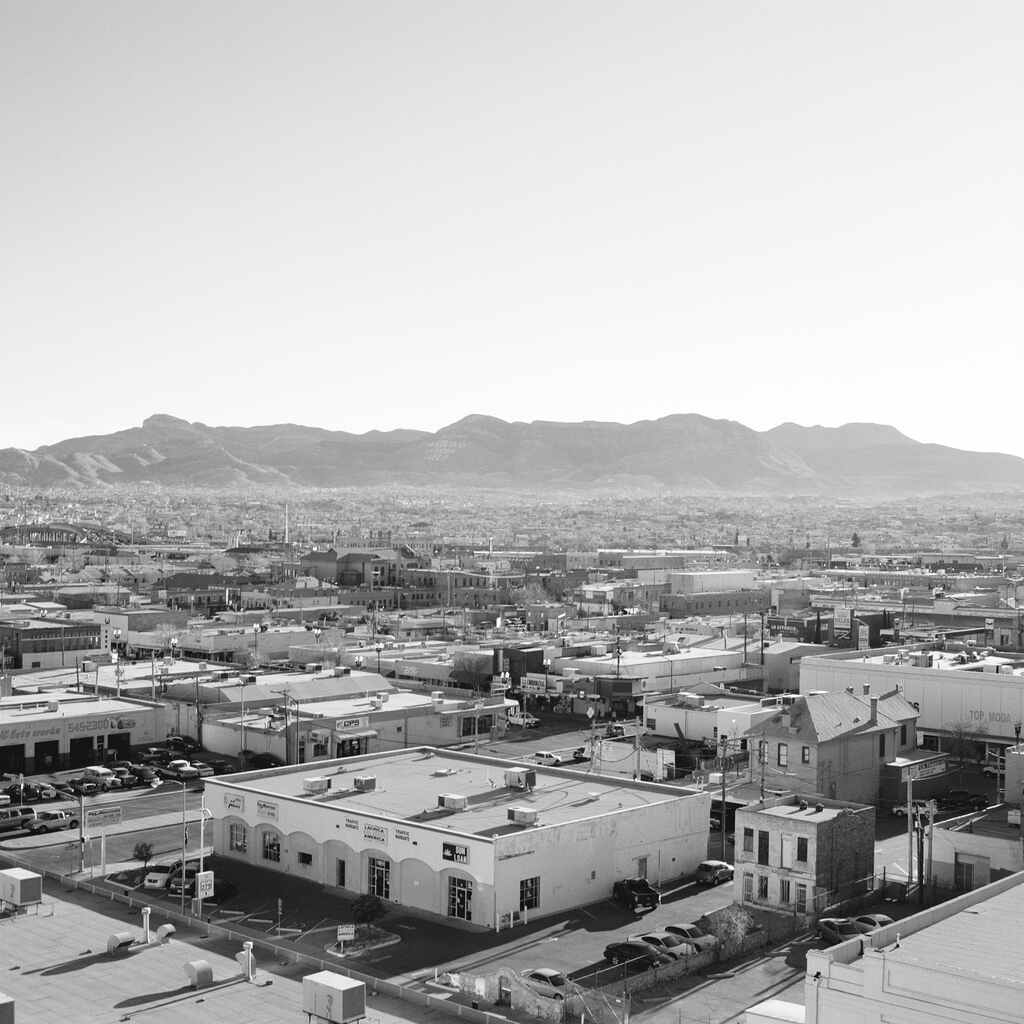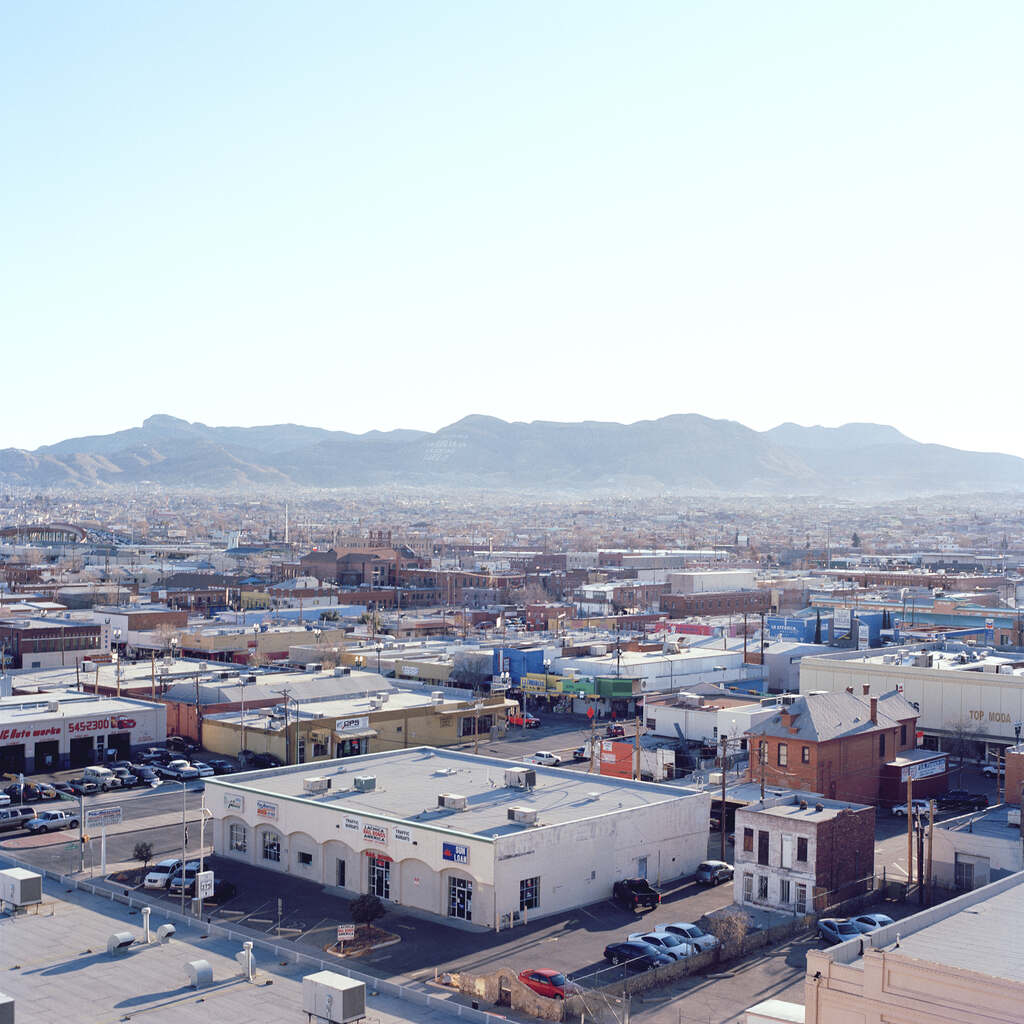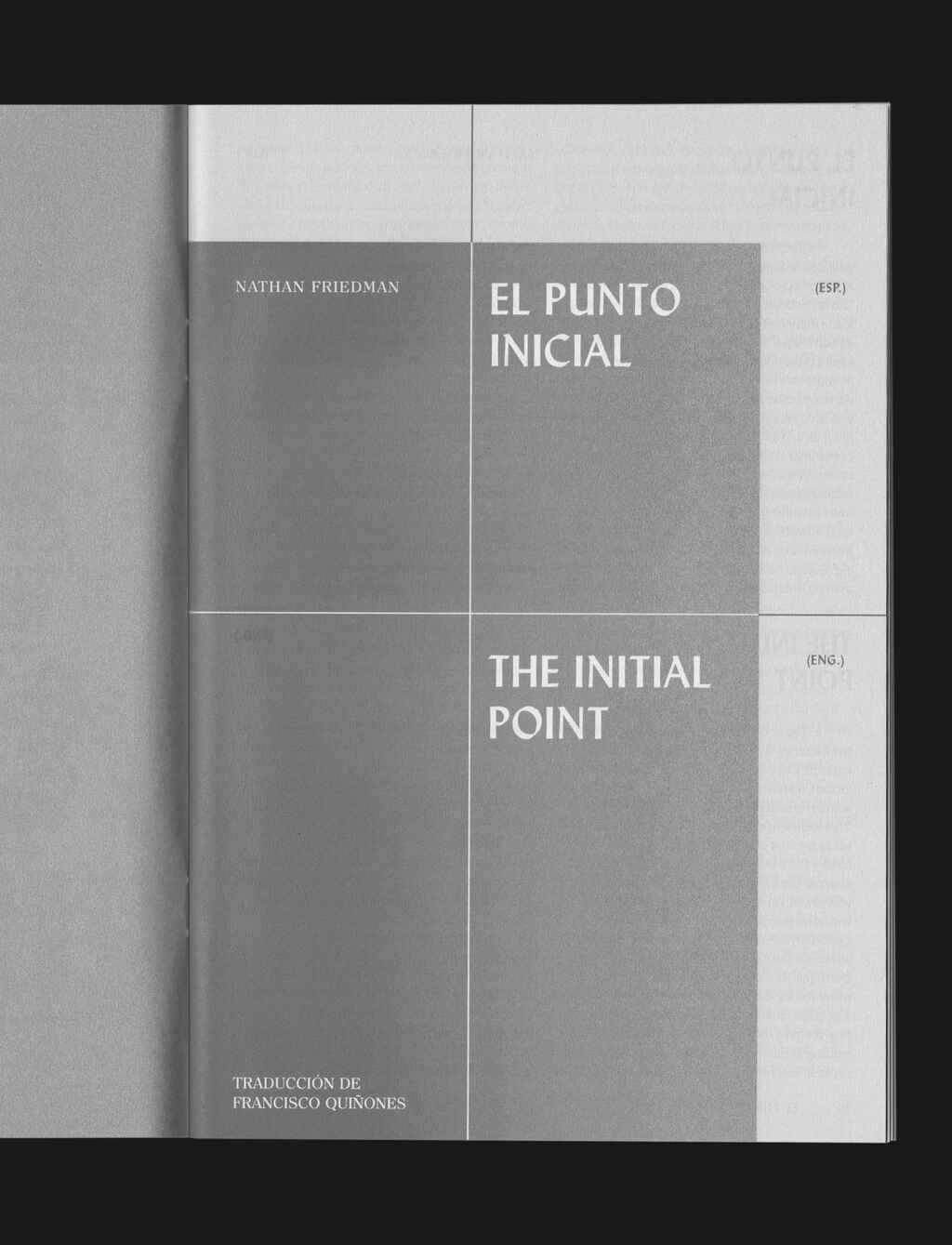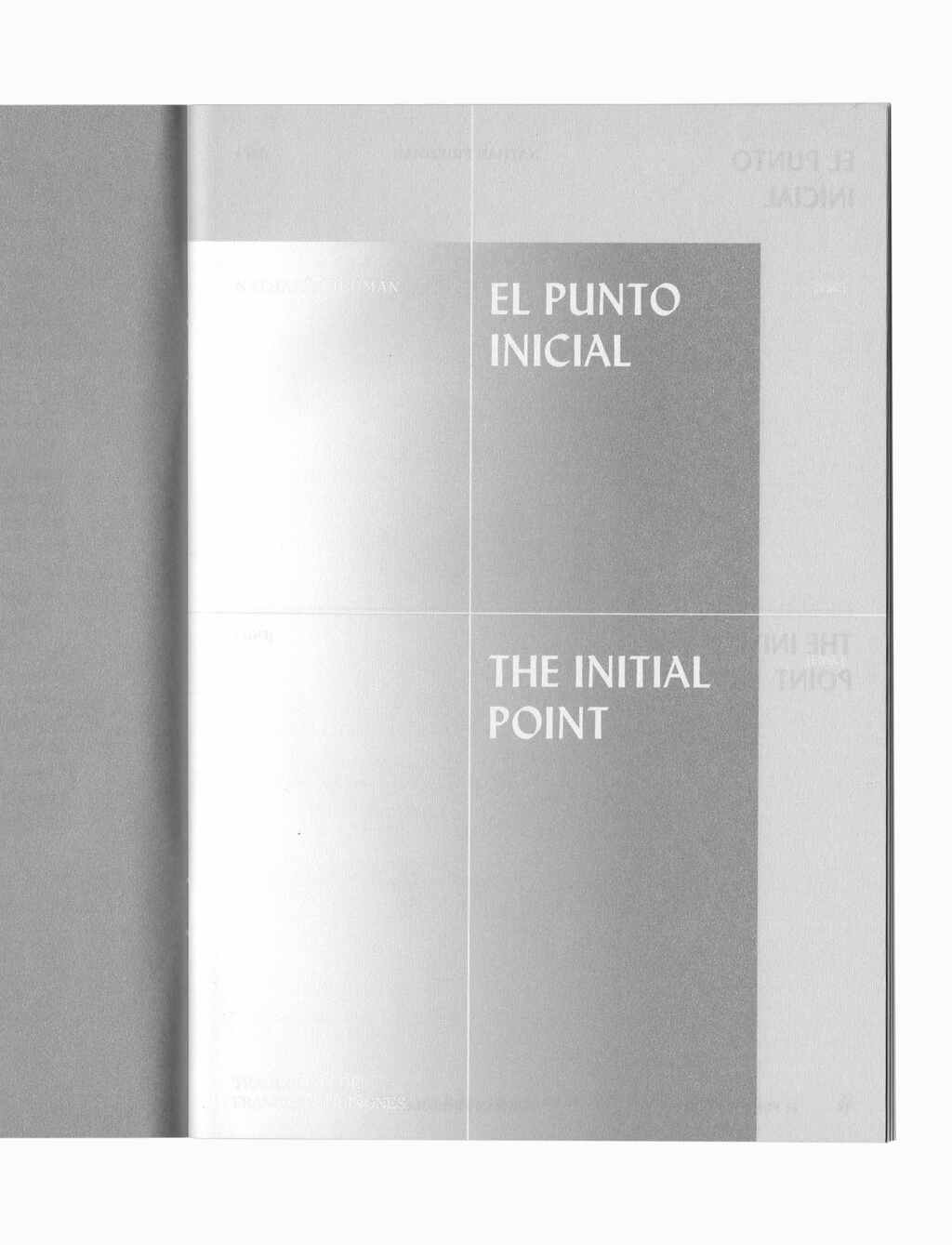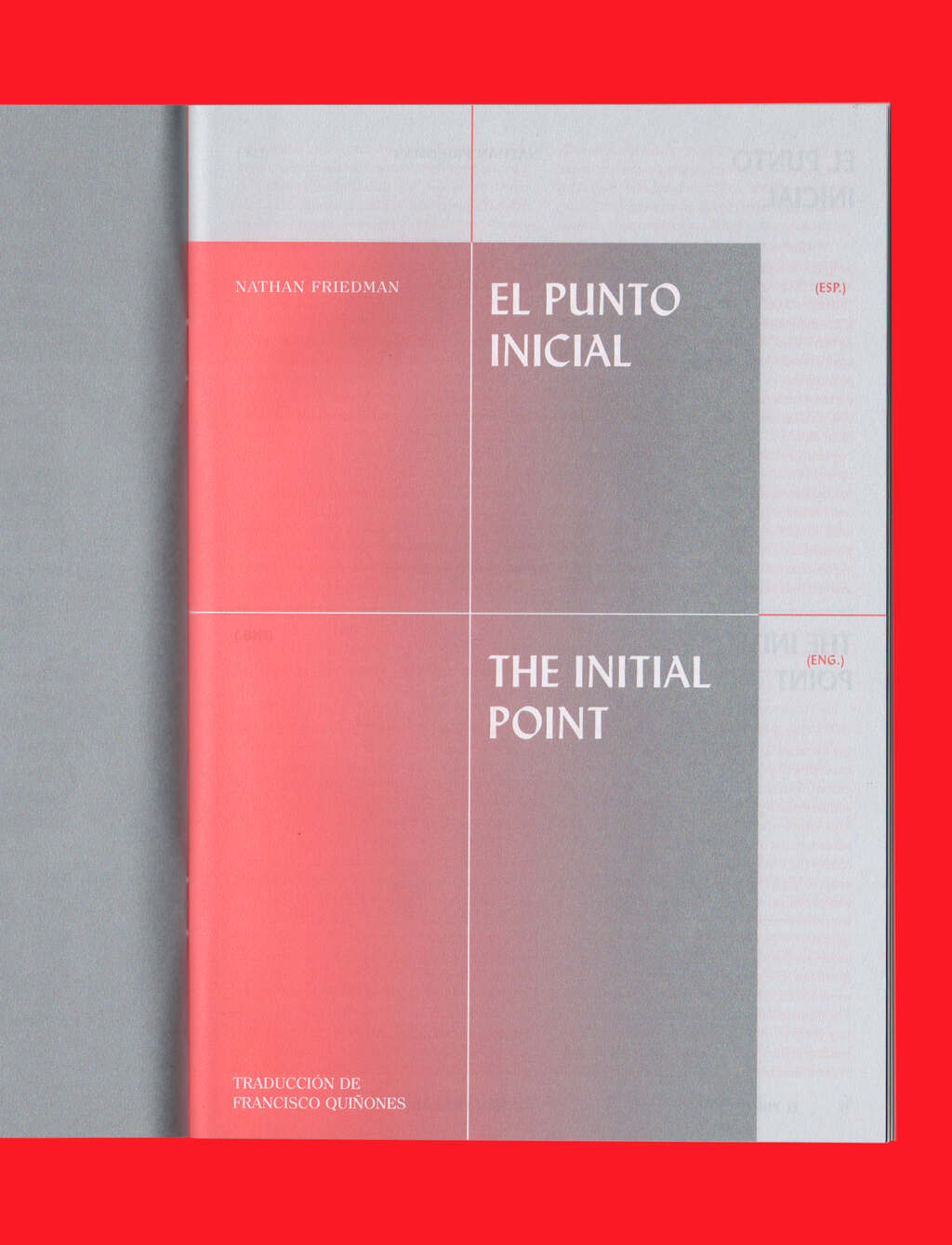Attending Limits
Attending Limits
2017-present
2017-present
277 obelisk monuments mark the US–Mexico boundary line. Constructed in three distinct phases (1849–1856, 1891–1912, and 1964–1968), these monuments were the product of territorial negotiations, disputes that were settled ranging from the violent expansion of sovereign limits to the shifting course of a historic boundary river. Commissioned, inscribed, and placed by both the United States and Mexico, they served as unique bilateral artifacts that operated across and reflected on separate territories, forms of settlement, and philosophies of nationhood.
277 monumentos en forma de obelisco marcan la línea fronteriza entre los Estados Unidos y México. Construidos en tres fases distintas (1849–56, 1891–1912, 1964–1968), dichos monumentos fueron el producto de negociaciones territoriales y de disputas que fueron resueltas por sucesos que van desde la expansión violenta de límites soberanos hasta el redireccionamiento del curso de un río que históricamente había funcionado como límite. Comisionados, grabados y posicionados tanto por los Estados Unidos como por México, éstos sirvieron como artefactos bilaterales únicos que operaron y reflejaron dos territorios, dos formas de asentamiento y dos filosofías de nación distintas.
Attending Limits: The Constitution and Upkeep of the US–Mexico Border presents the international boundary through a history of its material artifacts and the modes of representation they have motivated. Beyond symbol, the original border monuments were fictions of federal accuracy presented as fact. They served as evidence that a theoretical borderline existed. Each held a hypothetical narrative of place and placing despite varied geographic realities, too often mired in instrumental imprecision, subjective viewpoints, and cartographic inaccuracies. In the case of the United States and Mexico, constitution of the two republics has continuously employed a calibration of the real and representational. While this stitching was required for the solidification of nineteenth century nation states and the resolution of territorial disputes thereafter, it calls into question the foundation of geographic division between the two countries. Further, it provides insight into a region defined by the cyclical reassertion of international limits, exemplified most recently by current US federal initiatives to secure the nation’s southern edge.
Attending Limits: La Constitución y el Mantenimiento de la Frontera entre los Estados Unidos y México presenta a dicho límite internacional a través de la historia de sus artefactos materiales y las formas de representación que éstos últimos han motivado. Más allá de su simbología, los monumentos fronterizos originales representaron la ficción de la precisión de ambos gobiernos federales presentada como hecho. Además, éstos sirvieron como evidencia de la existencia de una línea fronteriza teórica. A pesar de sus distintas realidades geográficas, cada monumento retenía una narrativa de lugar y emplazamiento hipotética, con frecuencia enredada en la inexactitud de los instrumentos de medición, en los puntos de vista subjetivos y en las imprecisiones cartográficas. Tanto en el caso de los Estados Unidos como en el de México, la constitución de ambas repúblicas ha empleado de forma continua la calibración entre lo real y lo figurativo. Aunque la costura entre ambas naciones fue necesaria para alcanzar la solidificación de los estados nación durante el siglo XIX y la consecuente resolución de sus disputas territoriales, ésta cuestiona los fundamentos de la división geográfica entre ambos países. Además, provee una perspectiva de una región definida por la reafirmación cíclica de los límites internacionales, ejemplificada más recientemente por las iniciativas del actual gobierno federal de los Estados Unidos que buscan asegurar su frontera sur.
Through the presentation of original text, animation, photographs, scale models, and maps, Attending Limits theoretically frames an evolution of the US-Mexico border from a single line to a geopolitical territory. Focusing on the material products of the international boundary, the exhibition seeks to expand our awareness of geopolitics to include artifacts and, more broadly, to understand the impact of these artifacts within the realms of architecture, urbanism, and landscape.
Por medio de la presentación de textos originales, animación, fotografías, modelos a escala y mapas, Attending Limits formula de manera teórica la evolución de la frontera entre los Estados Unidos y México, comenzando con la idea de una línea única y terminando en el concepto de territorio geopolítico. Enfocándose en los productos materiales de dicha frontera internacional, la exhibición busca expandir nuestra conciencia sobre el concepto de geopolítica, incluyendo en éste a los artefactos y, de forma general, ayudándonos a entender el impacto de éstos últimos dentro de los campos de la arquitectura, el urbanismo y el paisaje.
Location
WUHO Gallery, Los Angeles, 2017
Bibliowicz Family Gallery, Cornell University AAP, 2019
Year
2017-present
Status
Ongoing
Category
Research and Exhibition
Ubicación
WUHO Gallery, Los Angeles, 2017
Bibliowicz Family Gallery, Cornell University AAP, 2019
Año
2017-presente
Estado
En curso
Categoría
Investigación y Exhibición
Content
Nathan Friedman
Exhibition Design
Departamento del Distrito
Graphics
Julia Novitch
Azusa Kobayashi
Contenido
Nathan Friedman
Diseño de la exhibición
Departamento del Distrito
Gráficos
Julia Novitch
Azusa Kobayashi
